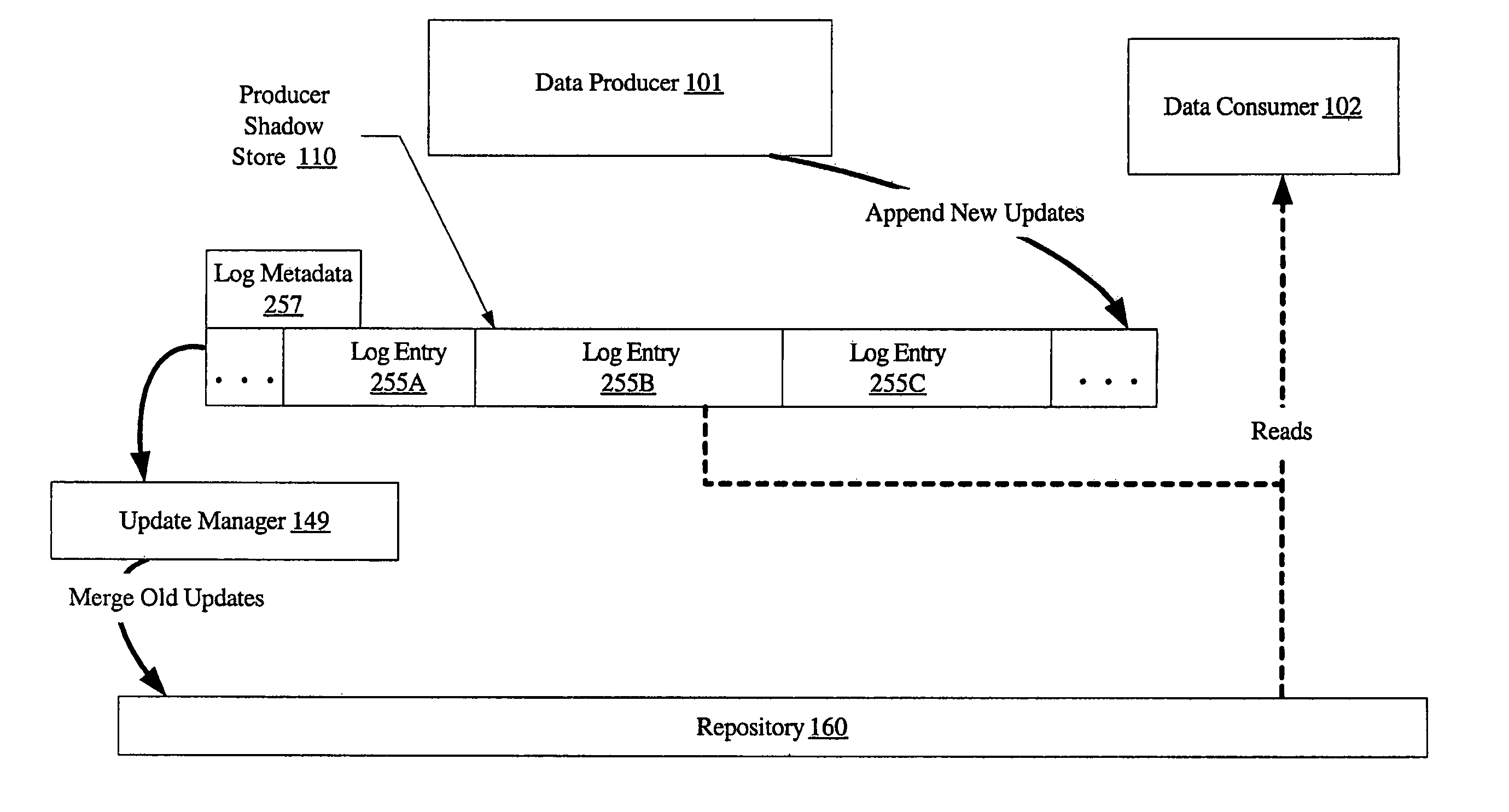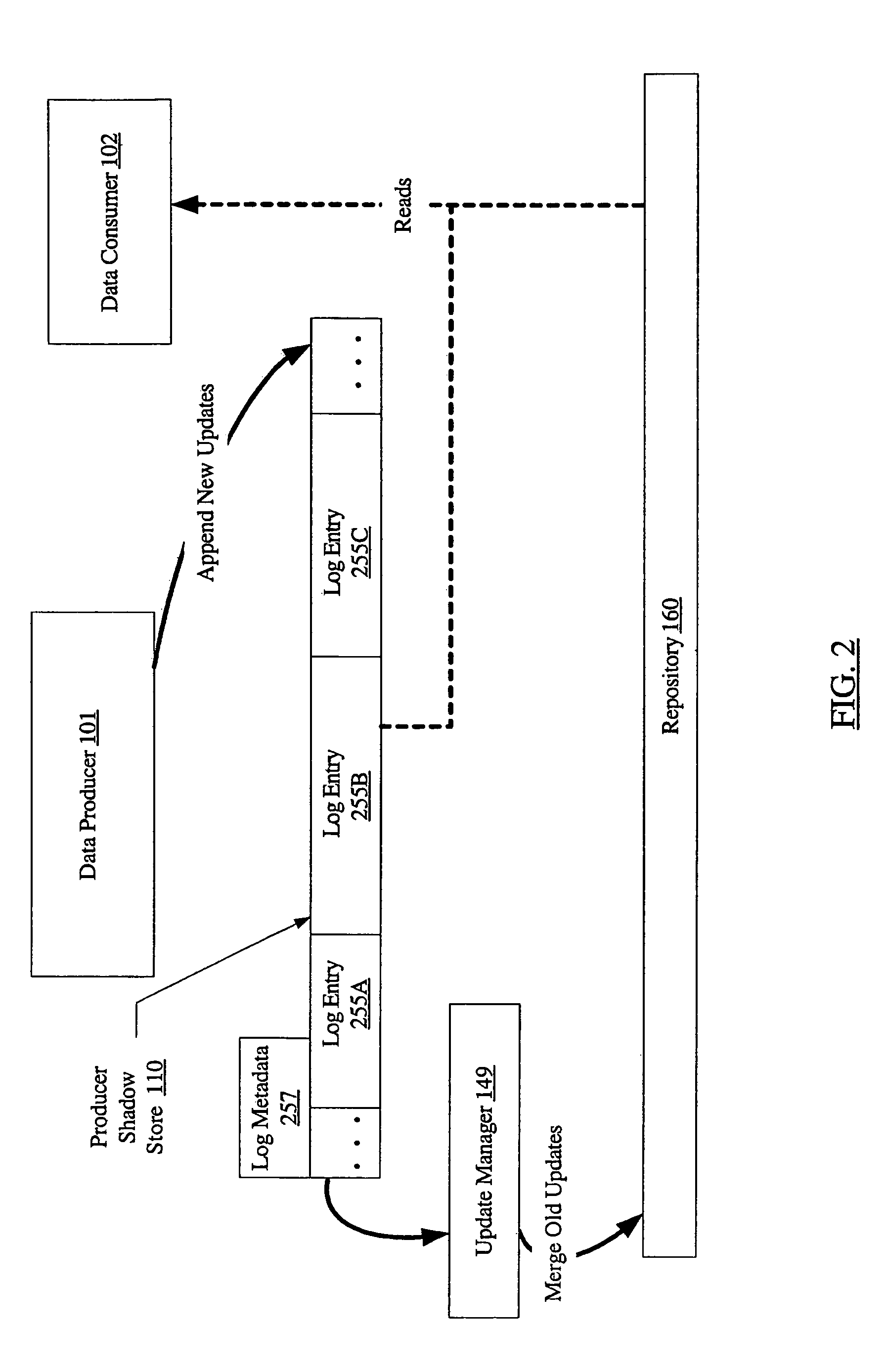System and method for loosely coupled temporal storage management
a temporal storage management and loosely coupled technology, applied in the field of computer systems, can solve the problems of affecting the load experienced by the production server, affecting the quality of service of storage operations, and increasing the potential for data corruption, so as to achieve low communication overhead, low impact on in-band i/o performance, and high degree of autonomy
- Summary
- Abstract
- Description
- Claims
- Application Information
AI Technical Summary
Benefits of technology
Problems solved by technology
Method used
Image
Examples
Embodiment Construction
[0032]FIG. 1 is a block diagram of a system 100 according to one embodiment. The system includes a data producer 101, data consumers 102A and 102B, a support host 130, physical storage devices 142A and 142B, and an intelligent storage device 143 connected by a network 103. Four logical storage entities are depicted using dashed lines in FIG. 1: a logical storage aggregation 115 and a producer shadow store 110 at data producer 101, a consumer shadow store 111 at data consumer 102B, and a repository 160 at support host 130. As described below, data corresponding to these logical storage entities may be stored within physical storage devices 142 (i.e., 142A and / or 142B), intelligent storage device 143, or a combination of physical storage devices 142 and intelligent storage device 143.
[0033]Logical storage aggregation 115 may be any logically related set of data, such as one or more volumes containing the data of a file system or a database management system. Data consumers 102 and dat...
PUM
 Login to View More
Login to View More Abstract
Description
Claims
Application Information
 Login to View More
Login to View More - R&D
- Intellectual Property
- Life Sciences
- Materials
- Tech Scout
- Unparalleled Data Quality
- Higher Quality Content
- 60% Fewer Hallucinations
Browse by: Latest US Patents, China's latest patents, Technical Efficacy Thesaurus, Application Domain, Technology Topic, Popular Technical Reports.
© 2025 PatSnap. All rights reserved.Legal|Privacy policy|Modern Slavery Act Transparency Statement|Sitemap|About US| Contact US: help@patsnap.com



